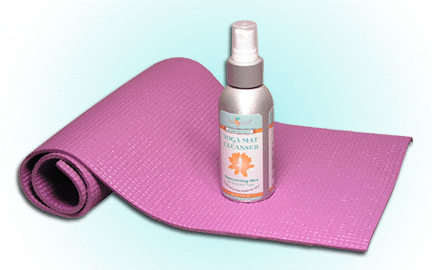
Monthly Archives: January 2008
Are degrees in homeopathy unjustified?
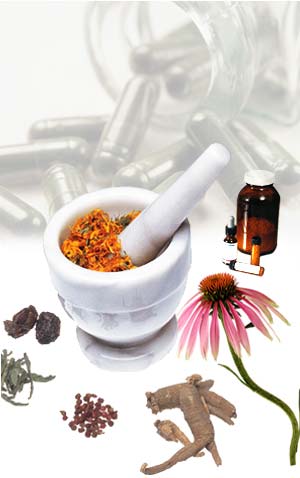 Over the past decade, several British universities have offered bachelor of science (BSc) degrees in alternative medicine, including 6 that offer BSc degrees in homeopathy.
Over the past decade, several British universities have offered bachelor of science (BSc) degrees in alternative medicine, including 6 that offer BSc degrees in homeopathy.
Many scientists and advocates of evidence-based medicine claim that giving homeopathy scientific status is unjustified.
Acupuncture after spontaneous rupture of membranes at term of pregnancy
 In an earlier entry the growing list of studies supporting the role of acupuncture in pregnancy clinics was summarized.
In an earlier entry the growing list of studies supporting the role of acupuncture in pregnancy clinics was summarized.
Now, there’s a study showing benefits of acupuncture for augmentation of labor after spontaneous rupture of membranes at term.
Continue reading Acupuncture after spontaneous rupture of membranes at term of pregnancy
How long does it take to get a CAM to market?
In a previous post I quoted from a Chinese medicine website that proclaimed “after sifting through more than 1,000 plants for 13 years, the researchers found 150 herbs with medicinal properties that appeared active in fighting HIV … From there, they selected the bark from white mulberry roots and four other Chinese plants as basic elements of their compound drug.” Continue reading How long does it take to get a CAM to market?
Determining the best options to evaluate CAM
 A special issue of Integrative Cancer Therapies questions the validity of evidence-based medicine (EBM) for evaluating CAM.
A special issue of Integrative Cancer Therapies questions the validity of evidence-based medicine (EBM) for evaluating CAM.
Continue reading Determining the best options to evaluate CAM
Positive results with peppermint oil to treat irritable bowel syndrome
 In general, past entries on this topic were positive, although peppermint oil gets a “C” rating (inconsistent or limited-quality patient-oriented evidence) for irritable bowel syndrome (IBS).
In general, past entries on this topic were positive, although peppermint oil gets a “C” rating (inconsistent or limited-quality patient-oriented evidence) for irritable bowel syndrome (IBS).
Maybe so, but here is another supportive study that tested the effectiveness of enteric-coated peppermint oil in a well-defined group of patients. Continue reading Positive results with peppermint oil to treat irritable bowel syndrome
Time to Talk
 To encourage discussions about CAM, the National Center for Complementary and Alternative Medicine (NCCAM) is offering free materials for doctors and consumers.
To encourage discussions about CAM, the National Center for Complementary and Alternative Medicine (NCCAM) is offering free materials for doctors and consumers.
The rationale for the “Time to Talk” campaign is that physicians who discuss CAM with their patients are more likely to know which patients might try such supplements. Continue reading Time to Talk
Marijuana available from vending machines in California
 Here’s a CBS video on the subject.
Here’s a CBS video on the subject.
It saddens me, but it’s instructive regarding the bias at CBS. Notice there’s no attempt to balance the report with any of the risks of marijuana or the lack of science on its “benefits.”
Go here for balance. Continue reading Marijuana available from vending machines in California
Spinning the effect of marijuana abuse in schizophrenics
 NORML, the medical marijuana advocacy group, thinks this is a positive study.
NORML, the medical marijuana advocacy group, thinks this is a positive study.
I don’t see it that way. Continue reading Spinning the effect of marijuana abuse in schizophrenics
Response to Ayurvedic herbal supplements among 9/11 survivors
 Here are the results of a study of Ayurvedic herbal treatment for health problems caused by exposure to the toxic chemicals at Ground Zero and in lower Manhattan following the September 11 attack on the World Trade Center.
Here are the results of a study of Ayurvedic herbal treatment for health problems caused by exposure to the toxic chemicals at Ground Zero and in lower Manhattan following the September 11 attack on the World Trade Center.
Improvement during Ayurvedic herbal treatment was reported. Continue reading Response to Ayurvedic herbal supplements among 9/11 survivors
Allopathic recommendations for non-drug treatment of low back pain
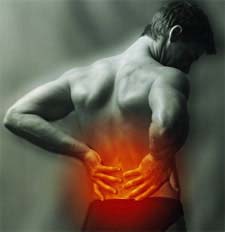 Researchers from Oregon Health and Science University in Portland have published an article on the evidence supporting treatment guidelines from the American Pain Society and American College of Physicians. Continue reading Allopathic recommendations for non-drug treatment of low back pain
Researchers from Oregon Health and Science University in Portland have published an article on the evidence supporting treatment guidelines from the American Pain Society and American College of Physicians. Continue reading Allopathic recommendations for non-drug treatment of low back pain
Trying to make cookies and potato chips healthier
![]() Researchers are studying the potential of snacks as vehicles to deliver more eicosapentaenoic acid, (EPA) plus docosahexaenoic acid (DHA) and conjugated linoleic acid (CLA) in snacks. Continue reading Trying to make cookies and potato chips healthier
Researchers are studying the potential of snacks as vehicles to deliver more eicosapentaenoic acid, (EPA) plus docosahexaenoic acid (DHA) and conjugated linoleic acid (CLA) in snacks. Continue reading Trying to make cookies and potato chips healthier
Negative results with statins; so let’s review CAM for Alzheimer’s disease
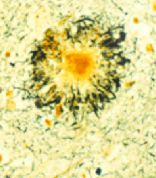
In the absence of an allopathic silver bullet, it’s worthwhile to review what we know about complementary options to ease what author Eileen Shamy refers to as “the frightening and weary stages of Alzheimer’s disease.” Continue reading Negative results with statins; so let’s review CAM for Alzheimer’s disease
US News and World Report on CAM integration
![]() At the US News website, Avery Comarow has a positive report on CAM use in US hospitals. Continue reading US News and World Report on CAM integration
At the US News website, Avery Comarow has a positive report on CAM use in US hospitals. Continue reading US News and World Report on CAM integration
Medical students in Wales want more education on CAM
 In 2000, the House of Lords Select Committee’s Report on CAM recommended familiarization with CAM for medical students and doctors.
In 2000, the House of Lords Select Committee’s Report on CAM recommended familiarization with CAM for medical students and doctors.
According to this article, little has been done. But it confirms an interest in greater exposure to CAM education among medical students in Wales. Continue reading Medical students in Wales want more education on CAM
Does garlic prevent cancer?
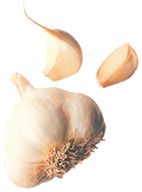 The National Cancer Institute has reviewed the evidence. Continue reading Does garlic prevent cancer?
The National Cancer Institute has reviewed the evidence. Continue reading Does garlic prevent cancer?
Using dan shen to treat stroke

Cochrane reviewed the published studies. Continue reading Using dan shen to treat stroke
Music therapy in gastrointestinal endoscopic procedures
 Dr. Dan Rudin from Statin Island University Hospital in New York looked at past studies and concluded it’s a “safe and cost-effective measure not to be overlooked.” Continue reading Music therapy in gastrointestinal endoscopic procedures
Dr. Dan Rudin from Statin Island University Hospital in New York looked at past studies and concluded it’s a “safe and cost-effective measure not to be overlooked.” Continue reading Music therapy in gastrointestinal endoscopic procedures
Linolenic acid lowers the risk of peripheral neuropathy in diabetics
 Alpha-linolenic acid is an omega-3 fatty acid found in many vegetable oils, including flaxseed, walnuts, and canola oil.
Alpha-linolenic acid is an omega-3 fatty acid found in many vegetable oils, including flaxseed, walnuts, and canola oil.
Researchers from the Centers for Disease Control and Prevention in Maryland reviewed data from the National Health and Nutrition Examination Survey (NHANES). They focused on adults with diabetes who were evaluated for peripheral neuropathy. Continue reading Linolenic acid lowers the risk of peripheral neuropathy in diabetics
More negative news for cinnamon and diabetes
 Researchers from the University of Connecticut and Hartford Hospital in Connecticut reviewed the literature and found no benefits. Continue reading More negative news for cinnamon and diabetes
Researchers from the University of Connecticut and Hartford Hospital in Connecticut reviewed the literature and found no benefits. Continue reading More negative news for cinnamon and diabetes